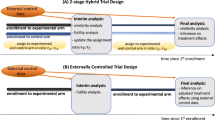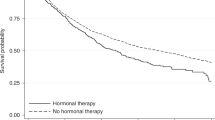Abstract
The results from an international survey of 15 major cancer centres have clarified how randomization is being implemented in cancer trials. As regards the mechanics of obtaining treatment assignment for each patient a system of telephone registration to a central randomization office was widely used. We also advise formal checks for patient eligibility immediately before treatment assignment, and subsequent written confirmation of randomization to the investigators. As regards statistical methods, stratification of randomization by one or two prognostic factors (and institution in multicentre trials) is commonplace. Most centres used the standard approach of random permuted blocks within strata though some others used "dynamic" institution-balancing or "minimization" methods instead. The value of stratified allocation is chiefly for the trial's credibility in having comparable treatment groups, rather than for statistical efficiency. One should avoid overstratification and use only the really important prognostic factors. One essential is that randomization should in practice work for every patient, so undue complexity is to be avoided.
This is a preview of subscription content, access via your institution
Access options
Subscribe to this journal
Receive 24 print issues and online access
$259.00 per year
only $10.79 per issue
Buy this article
- Purchase on Springer Link
- Instant access to full article PDF
Prices may be subject to local taxes which are calculated during checkout
Similar content being viewed by others
Rights and permissions
About this article
Cite this article
Pocock, S., Lagakos, S. Practical experience of randomization in cancer trials: an international survey. Br J Cancer 46, 368–375 (1982). https://doi.org/10.1038/bjc.1982.212
Issue Date:
DOI: https://doi.org/10.1038/bjc.1982.212
This article is cited by
-
Meta‐analyses in Cancer Clinical Trials: Principles and Pitfalls
World Journal of Surgery (2006)
-
An automated patient registration and treatment randomization system
Journal of Medical Systems (1995)



